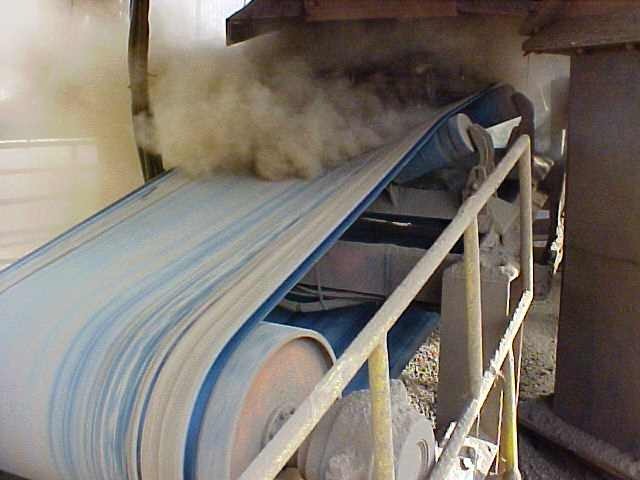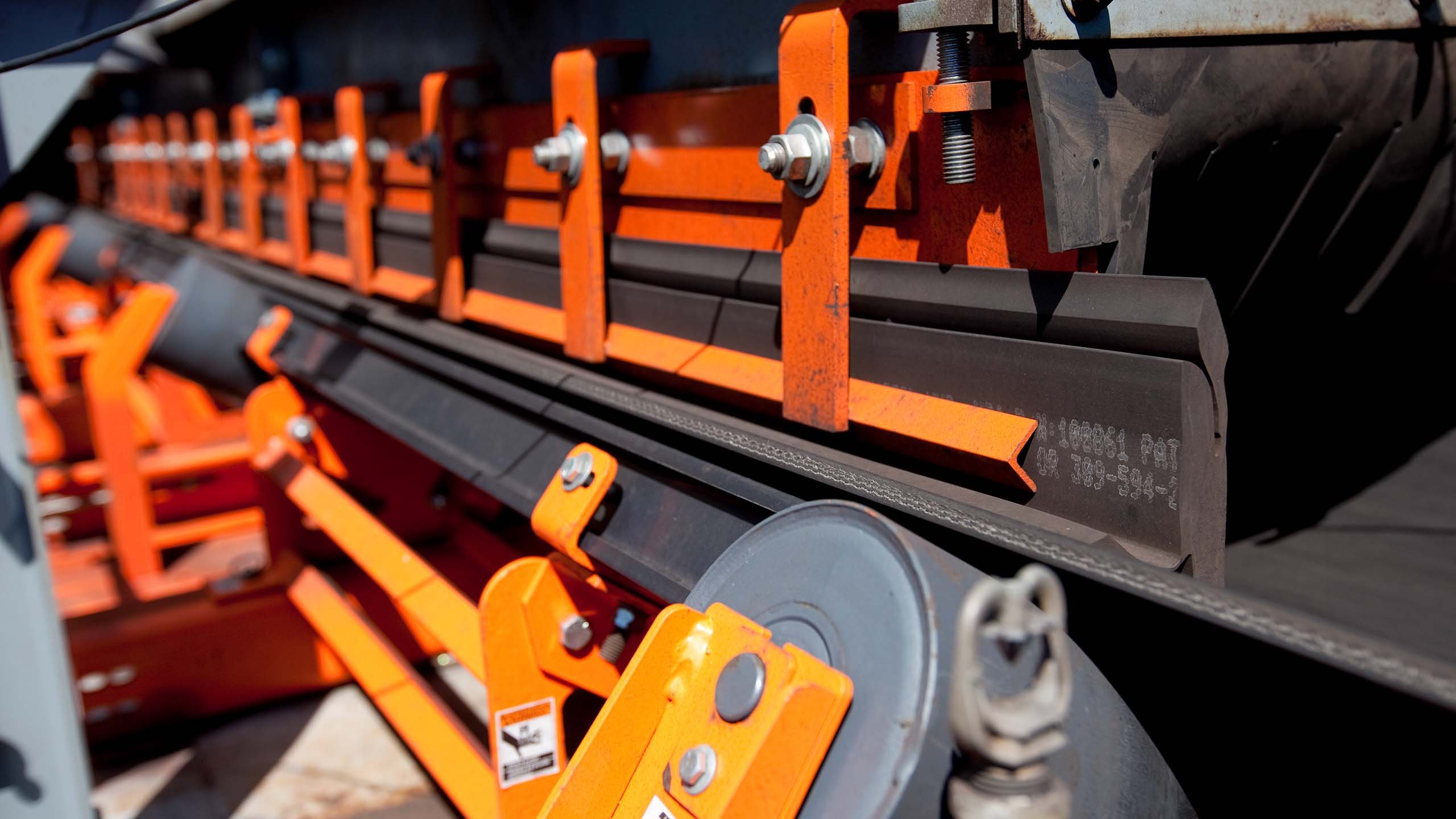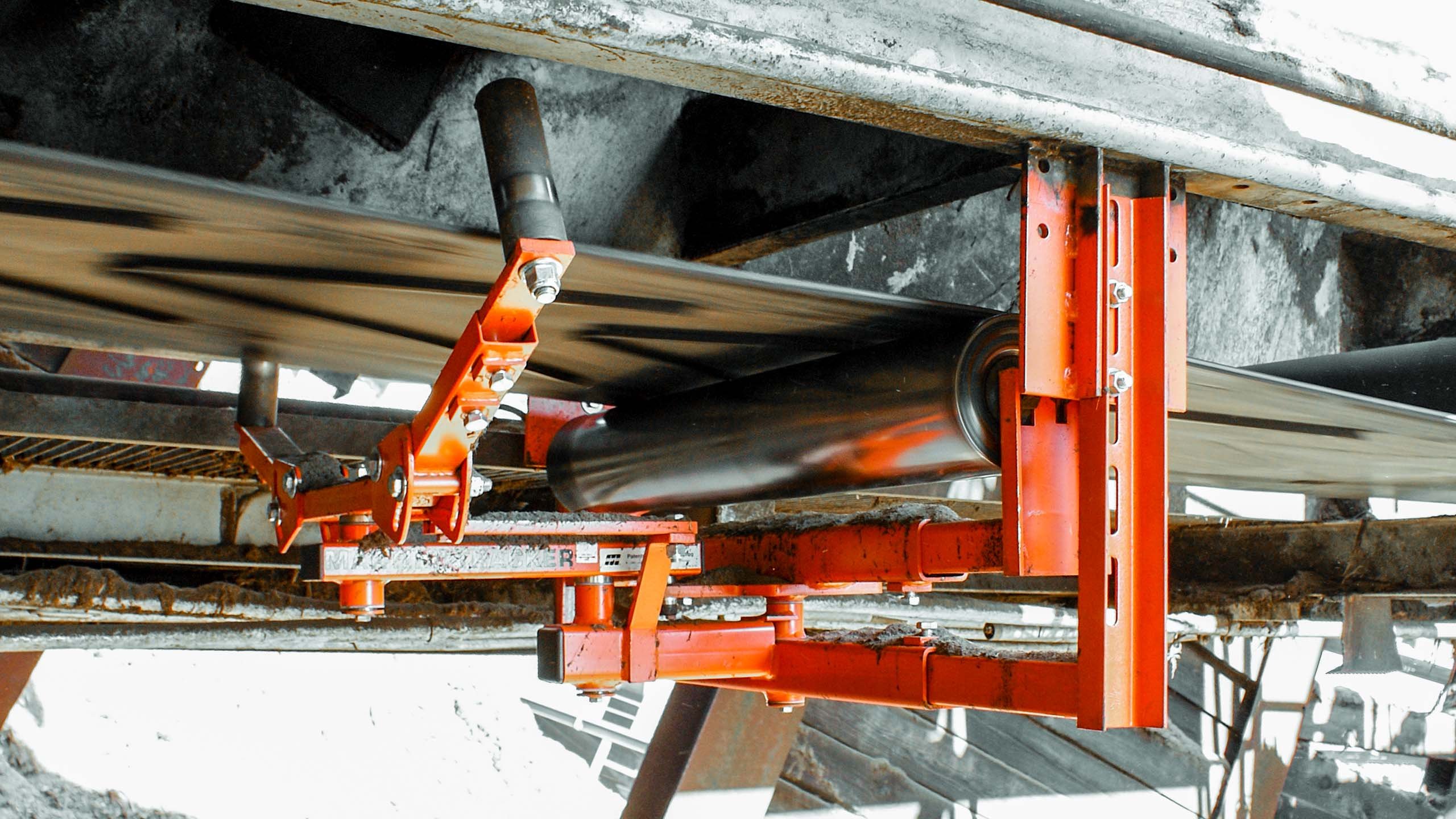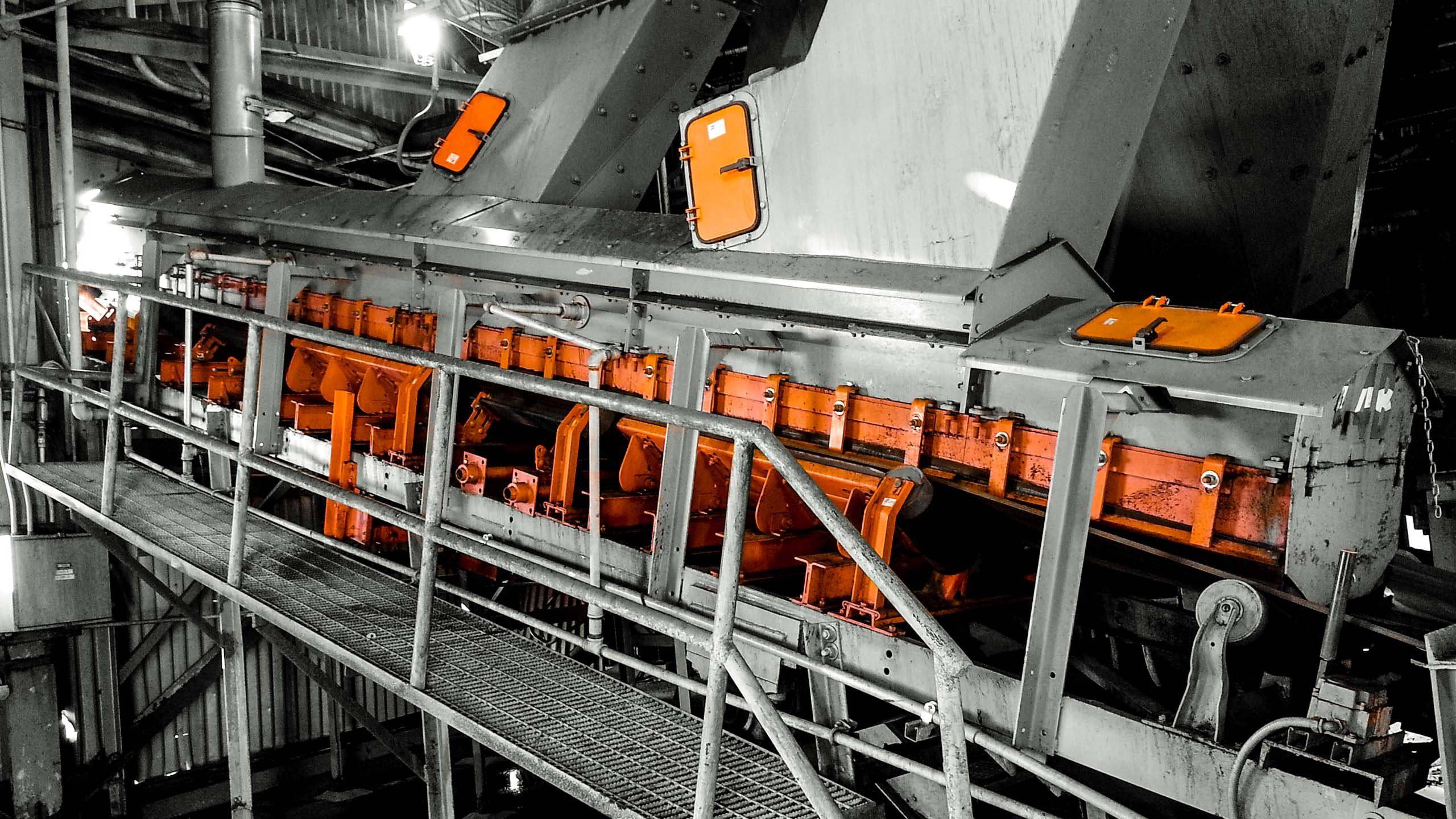Some sealing systems are clamped on the outside of the chute with the elastomer strip curled back under the steel. With these types of systems, the seal is formed on the inside of the skirtboard. Because the seal lies inward, the wear liner must be spaced far enough above the belt to allow for some free vertical movement of the seal. These inward systems have had some success on conveyors carrying light, fluffy materials and fine, non-abrasive materials, such as carbon black. Inward sealing systems are also useful as a temporary solution on belts with limited edge-sealing distance, where a lack of belting outside the skirtboard steel limits the space available for the application of a sealing system. These systems are sometimes useful in areas of high internal-chute pressure—under a rail car dump, for example—where, when properly applied, the material loaded on the seal would tend to assist in the sealing effort. It should be noted that the seal may wear quickly, and material trapped under the seal would tend to prematurely wear the belt’s top cover.

Sealing inward is sometimes applied due to a belt with a severe mistracking problem, because the belt would be least likely to travel out from under this type of system. In this situation, it would be better to solve the mistracking issues rather than apply a seal to overcome the problem.
The protective benefit from the installation of wear liner can be neutralized when the sealing system reaches back under the skirtboard, placing the sealing strip inside the wear liner. The sealing strip is abraded by the material load, and material can more easily be entrapped against the belt.
Main advantages of inward skirtboard sealing systems are:
- Self-adjusting
- Handle light, fluffy materials and fine, non-abrasive materials
- Require limited edge distance (free-belt distance)
- Handle high internal chute pressure
- Handle severely mistracking belts
Principal disadvantages of inward skirtboard seals are:
- Shorter life of the seal due to being in the material flow
- Prone to material entrapment under the sealing strip lading to premature belt wear
- Reduced load-carrying area of the belt due to the “rainbow” effect
A hybrid of these systems combines the floating vertical-sealing system, described in Vertical Sealing above, with an “L”-shaped rubber strip. The foot of the rubber “L” extends inward, under the skirtboard steel and wear liner, toward the bulk materials. This one-piece sealing system serves as both the material (lump) seal and a dust seal. The rubber “foot” improves the seal’s resistance to side pressure from the belt cargo and increases the range of belt mistracking the sealing system can tolerate.
This type of system is particularly useful for transfer points where the wear liner is installed 25 millimeters (1 in.) or more above the belt. This spacing is used to preserve the belt from being damaged by running up against the wear liner and is a common practice in some industries where conveyors and conditions are less than ideal, such as coal mining and aggregate production.
The hybrid system allows the seal to float on the belt, rising and falling with any belt movement, including splice passage. The low application pressure reduces wear in both the belt and sealing strip.




















Leave Comment